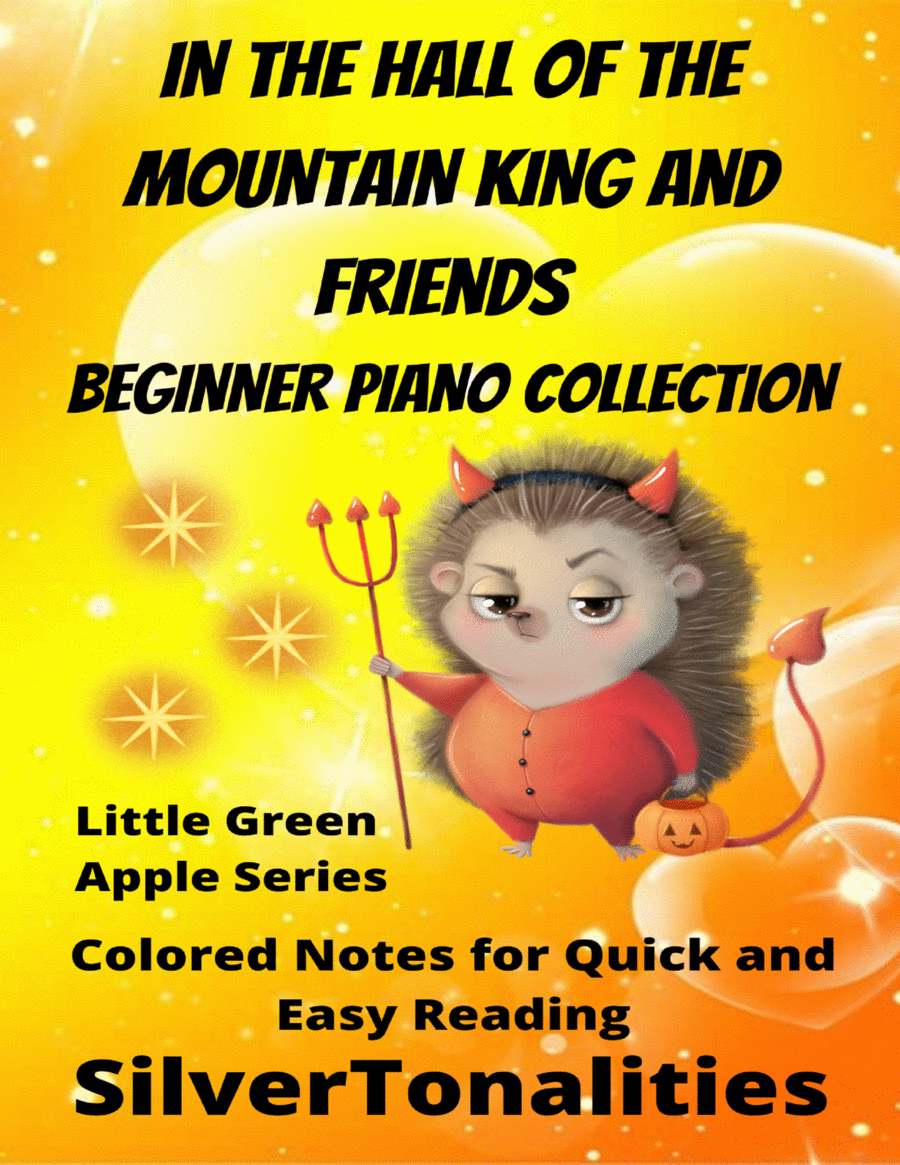Easy Piano - Level 1 - Digital Download SKU: A0.1376532 By SilverTonalities. By Edvard Grieg. Arranged by SilverTonalities. Classical,Instructional,Opera,Romantic Period. Score. 39 pages. SilverTonalities #961052. Published by SilverTonalities (A0.1376532). In the Hall of the Mountain King Beginner Piano Collection Popular Classics for Beginner Pianists by SilverTonalities!With Colored Notation to enable Beginner Pianists to read Music quickly and accurately!PREVIEW, pages 1-2BELLA BOCCA POLKA Opus 163, written in 1881 by the French Romantic Composer Emile Waldteufel. Born into a musical family, Waldteufel composed over 270 Works including his famous âSkaterâs Waltzâ, pages 3-6TOREADOR Song is a popular Aria from the 4 Act Opera âCarmenâ ,by the French Romantic Composer Georges Bizet, which premiered in Paris in 1875, pages 7-9SUNRISE QUARTET Opus 76 Number 4 1st Movement, was written by the famous German Composer, Franz Joseph Haydn. Known as the âSunriseâ due to the rising theme throughout, this String Quartet which was written between 1797 to 1798, pages 10-12THE QUEEN OF THE NIGHT is from the Austrian Composer, Wolfgang Amadeus Mozartâs famous Opera âThe Magic Fluteâ which premiered in 1791 in Vienna, pages 13-16IN THE HALL OF THE MOUNTAIN KING, Opus 46 Number 4 from the Norwegian Composer, Edvard Griegâs Peer Gynt Suite written in 1875, pages 17-20CAN CAN from the Opera âOrpheus in the Underworldâ, was written in 1858 by the French Romantic Era Composer Jaques Offenbach, pages 21-22AIR from the five Act Opera âKing Arthurâ, written by the English Baroque Composer Henry Purcell, which premiered in London in 1691. The plot is based on the battles between King Arthurâs Britons and the enemy Saxons, pages 23-25COMIC DUET FOR TWO CATS by the Italian Romantic Era Composer, Gioachino Rossini in 1825 is a popular performance piece originally written for two Sopranos and Piano, pages 26-30THE UNFINISHED SYMPHONY, from the Austrian Composer Franz Peter Schubert, originates from his Symphony Number 8 in D Minor D759. Schubert started it in 1822 but only completed 2 Mvts even though he lived another 6 years, pages 31-36.
